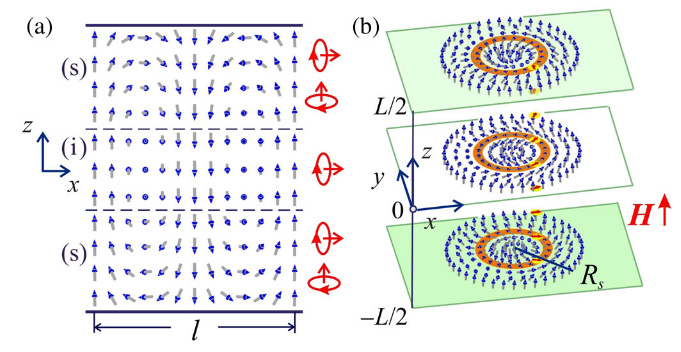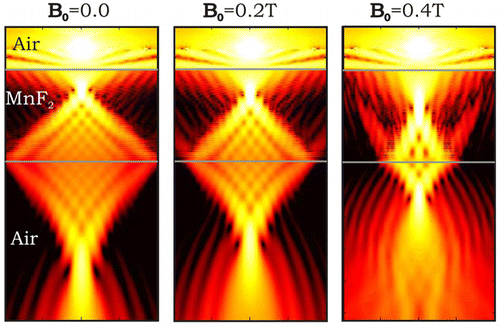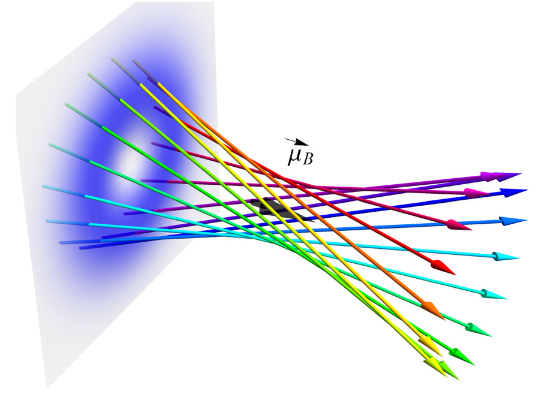People and Collaborations
Jephthah Iyaro (Cavity Magnonics)
Rehana Popy (Bilayer Artificial Spin Ice and applications to machine learning)
Premarun Barik (Spin glasses and pattern formation)
Julia Frank (Control mechanisms in Artificial Spin Ice)
Mahdis Hamdi (Machine learning and magnetic nanoparticles) <\p>
Jack Lindner (Active inference) <\p>
Rair Macedo (Leverhulme Fellow, University of Glasgow)
Recent and On-going Projects
Chirality and Magnetism

Magnetic skyrmions are a type of mobile 'twist' that can move and be moved with a surprisingly small electric current. They display a fascinating and complex diversity of properties that are not understood, and hints of phenomena waiting to be discovered. The figure illustrates one of our predictions of a self stabilising skyrmion deformation. [Leonov et al., Phys. Rev. Lett. 117, 087202 (2016)]
Going Beyond Artificial Spin Ice

Artificial spin ice represent a class of new magnets that can be created out of thin magnetic films. The number of designs possible is limited only by imagination, and they offer models with which to study geometrical frustration and new kinds of magnetic ordering. We are using them to explore how phase transitions and ordering can be understood using tools from complex networks and machine learning. [Budrikis et al., New J. Phys. 14 045008 (2012)]
Surprising Optics of Magnets

We have shown how negative index metamaterials can exist naturally in certain materials. Antiferromagnets are especially interesting because of how magnetic fields can be used to modify their optical properties. We are now examining how to take these ideas further with complex reprogrammable matrices containing multifunctional materials. [Macedo et al.,ACS Photonics 3 1670 (2016)]
Chirality and Electrons

Photons and electrons can occupy states that have a vortex like structure wherein the surface of constant phase has a line discontinuity. These states have orbital angular momentum and in the case of charged particles, carry a magnetic moment. We are exploring how particles in these states may interact with matter and other excitations. [Greenshields et al., New J. Phys. 14 103040 (2012)]